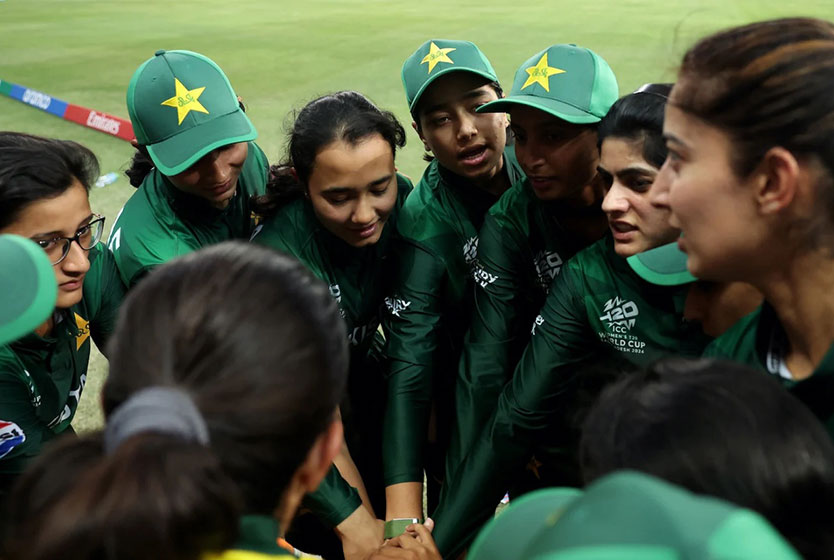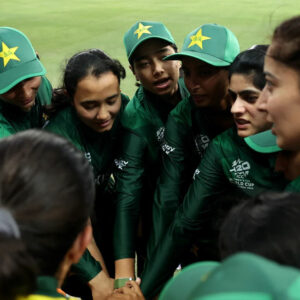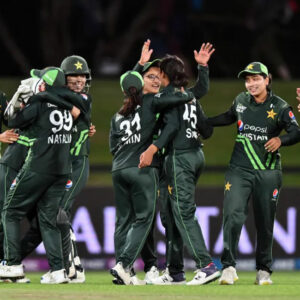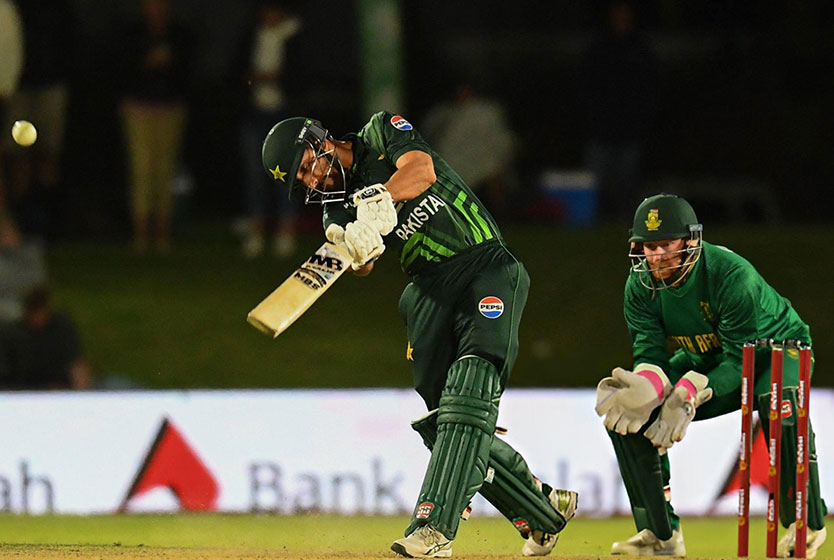
An Attempt at Audacity – Pakistan at the Women’s T20 World Cup 2024
On paper, Pakistan ended the 2024 T20 World Cup exactly like they did the previous edition – with one win in four matches and a subsequent group-stage exit. However, with a newly defined approach, a fresh young captain, and, for once, a legitimate management with particular attention paid to the specifics, this time was already different than the last. An additional bit of context is that this time, Pakistan found itself in the “group of death” – consisting of an unbeatable Australia, an India who had defeated them in the Asia Cup a few months prior, a struggling but still prolific New Zealand side, and newly crowned Asian champions, Sri Lanka. Considering the quality and mettle of the opposition, Pakistan had their work cut out for them even before the tournament started.
Batting Woes
Pakistan’s performance in the tournament was underscored by an inconsistency in the batting performance, match after match. Throughout the tournament, Pakistan’s top order averaged a paltry 7.5, striking at a lean rate of 69.7. The shuffling of batting order depending on conditions and match situation means that these numbers shouldn’t be taken at face value – but it certainly gives an idea of the piecemeal, patchy ways the batting order contributed to scores across the tournament. Minimal contributions by the top and middle orders and unsatisfactory batting performances by the senior-most players – Nida Dar, Aliya Riaz, and Sidra Ameen – made it a batting tournament to forget.
What is important to note, however, is that from the string of games beginning in the Asia Cup in July, the team seems to have followed a consistent approach towards constructing a batting innings. This has mostly involved flexibility in batting order based on the game situation, as well as an uptick in intent shown by batters. The approach seemed to pay dividends in the Asia Cup, where Muneeba Ali and Gul Feroza set up brisk opening century stands against Nepal and the UAE in two consecutive matches, and in the bilateral series versus South Africa that was to follow, during which Pakistan scored its highest ever total in a T20. While the overall batting performance was a let-down in the World Cup, what must be factored into it is the quality of opposition bowlers and teams having to adapt to playing conditions. What would be better for the team in the long run, then, would be to not abandon this rigorous approach, despite it failing in the tournament and despite the batting unit being shaken up – giving it a consistent run with regular practice is the only sure way to assess its utility, and sticking to a planned, thought out and empirically based approach is a team’s best bet in cracking T20 batting.
Of course, the above contingencies do not take away from the abysmal batting tournament that Pakistan had. Across four innings, the team managed only one score of 30+ – that by captain Fatima Sana against Sri Lanka.
Possibly the most pertinent evidence of this intentional mode of batting working is the rising ranks of Fatima Sana, the batter – something I will address later in this article.
Death by Spin
It can be argued that bowling was Pakistan’s best-performing area in the tournament, with spinners Sadia Iqbal and Nashra Sandhu being standout performers, taking 6 and 5 wickets each across four matches. Sadia, averaging 13.3 in the tournament, briefly reached the number 1 spot in the ICC T20 bowler’s ranking following the match against Sri Lanka, displayed variation in her plans, adjusting her lengths and the breadth of width offered as a reaction to what the batters were attempting. In an interview with ESPNCricinfo, she specified how sticking to what she knew alongside adapting to the situation at hand made her spells with the new ball as crucial as they were. Her 3-17 against Sri Lanka, achieved primarily by inviting batters to attack, contributed greatly to the 31-run win, while her early strike to remove Smriti Mandhana gave Pakistan the edge and made a match out of what should have been a breezy total to chase.
Omaima Sohail and Nashra Sandhu were other standout performers in the spin department, with the former setting up the initial win against Sri Lanka with two early wickets, while the latter restricted New Zealand to a score of 110 with figures of 3-18 in her four overs (whether one can say the score was restrictive if it wasn’t chased is another matter altogether).
Pakistan’s pace resources were bleak – they consisted entirely of captain Fatima Sana after the team lost opening bowler Diana Baig to injury after the first ball Pakistan bowled in the tournament. But then, again, it wouldn’t be remiss to say that, at times, Pakistan consisted entirely of Fatima Sana.
The brilliance of Fatima Sana
Pakistan’s tournament started with a match against Sri Lanka. Within it, Pakistan’s tournament started with a contest between the two captains – Chamari Athapaththu and Fatima Sana. Fatima’s innings of 30 off 20 balls added much-needed impetus to a score that teetered dangerously close to finishing on two digits. The innings was remarkable on three fronts: it indicated that the promising batting performances that Fatima had been displaying – some as recently as against South Africa in September – were not flukes. It also indicated that the fiercer approach Pakistan has been attempting while batting is not a pipe dream, and with appropriate levels of fight and resolution, it might just render itself sustainable. And finally, of course, because witnessing a fast-bowling allrounder in her nascent years of all-rounding is nothing short of a blessing.
When Sri Lanka appeals for a caught behind for her wicket, and Ultra Edge shows a spike, the Sri Lankan captain’s celebration is emphatic, marking the end of the only individual innings that may have frustrated them. The contest bleeds into Sri Lanka’s batting innings when Fatima bowls to Athapaththu (who had troubled Pakistan enough earlier in the year to cost them the Asia Cup semi-final), who hits it to cover, where Omaima Sohail takes a match-defining catch. “In the battle of the captains,” Nasser Hussain calls from the commentary box, “Fatima Sana wins.” In the post-match presentation, she picks up both – the Player of the Match award, as well as high praise from a player as seasoned as Athapaththu.
Fatima Sana not just proved to be Pakistan’s best batter in the tournament, but also the team’s spark. Having to leave the tournament after two matches after facing the deeply tragic loss of her father, she returned for the last group stage match in a display of admirable bravery and resolution.
While Pakistan may have fallen short in several areas and still have a long way to go, a leader like Fatima Sana, someone who took up her role enthusiastically and with passion at a time when the team was undergoing major overhauls, is nothing short of the best step forward. Glimpses of a more daring, ambitious side were seen when Pakistan challenged the difficult equation they faced if they wanted to qualify for the semifinals in the run-chase against New Zealand. Needing to chase the score in 10.4 overs to breach the threshold, Pakistan promoted Aliya Riaz up the order by sending her to open the innings with Muneeba Ali. The batting innings that followed was largely unremarkable and ended with the team in a heap after having scored just 56 runs – but the fact that they fell attempting to attack and score briskly might be a small inkling of a testament in itself. That brief period where Pakistan dared to aim for the unlikely but more rewarding outcome instead of not trying at all might be a spark bright enough to indicate a sharper, more blistering flame burning in the future.
What differentiates this campaign by Pakistan from their previous ones is a word. Earlier, one could say Pakistan were not great, they could be better. This time, it might not be an overstatement to say that Pakistan were not great – but they will be better.







Leave a Reply